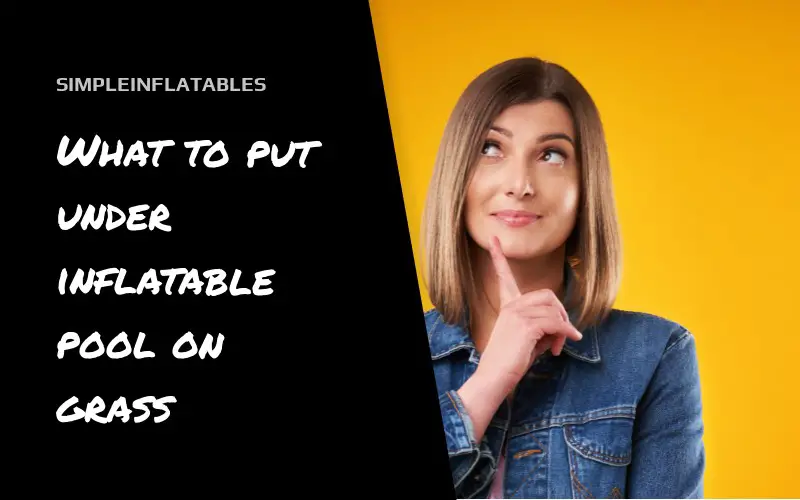Inflatable pools are a fantastic way to bring the fun of swimming into your backyard without the commitment of a permanent structure. However, placing an inflatable pool directly on grass can lead to damage to your lawn and the pool itself. In this post, we’ll explore various options for what to put under an inflatable pool on grass, ensuring both your pool and lawn stay in good condition.
Understanding the Need for a Base
Before delving into the materials, it’s important to understand why you need a base under your inflatable pool:
- Protects Grass: Direct contact with the pool can cause the grass to yellow and die due to lack of sunlight and air.
- Prevents Pool Damage: Uneven ground or sharp objects in the grass can damage the pool.
- Enhances Safety: A stable base can prevent slipping and tripping hazards.
Suitable Materials to Place Under an Inflatable Pool
1. Tarp
A simple and affordable option is a large tarp. It’s easy to set up and can protect both the grass and the pool from damage. Ensure the tarp extends beyond the pool’s edges.
2. Foam Tiles
Interlocking foam tiles can create a soft, cushioned base. They are easy to install and provide a smooth surface, which is particularly comfortable for pools without padded floors.
3. Old Carpets or Rugs
Repurposing old carpets or rugs is a cost-effective solution. They offer a soft layer of protection, though you need to ensure they are flat and cover the entire area under the pool.
4. Ground Cloth or Pool Liner
Specifically designed ground cloths or pool liners are available for this purpose. They are made from durable material and fit neatly under the pool, offering reliable protection.
5. Artificial Grass
Artificial grass can be a permanent solution for where you frequently place your pool. It prevents damage to natural grass and provides a soft base.
6. Commercial Pool Pads
These are specially designed pads that go under inflatable pools. They are durable, often made from heavy-duty materials, and provide excellent protection.
7. Plywood Sheets
Laying down plywood sheets can create a solid and level base. This is a good option for larger pools, though the wood should be sanded to prevent splinters.
8. Sand
Creating a sand base can provide a smooth and soft foundation. It’s particularly useful for leveling out an uneven lawn.
Additional Tips
- Level the Ground: Before laying down your chosen material, make sure the ground is level. This prevents the pool from leaning to one side and reduces stress on its material.
- Consider Drainage: Ensure there’s proper drainage around the pool area to prevent water accumulation, which can damage both the lawn and the pool.
- Check for Sharp Objects: Before setup, remove any stones, sticks, or sharp objects from the grass.
- Pool Size and Weight: Consider the size and total weight of the pool when filled with water to choose a material that can withstand the pressure.
Conclusion
Setting up a base for your inflatable pool is a crucial step to ensure its longevity and to protect your lawn. By considering the options above, you can find a solution that fits your needs and budget. A little preparation can go a long way in enhancing your backyard swimming experience, keeping your lawn green and your pool in great shape for the summer months.
